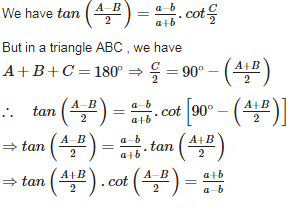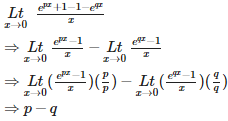CBSE 11TH MATHEMATICS - Online Test
As a,4,b are in AP so, ................(i)
Also a,2,b are in GP so, ab = 4...................(ii)
from (i) and (ii)
hence a, 1 , b are in HP
Let other two numbers be x and y
Mean (x) = 4.4 =
this gives ......(1)
Also, ........(2)
Therefore from (1) and (2)
x = 9 and y = 4
The vertical lines which are parallel to Y axis has undefined slopes. Hence the slope of the line 'm' will be undefined.
Therefore the above equation of the line will represent all lines through () except the line parallel to Y- axis
(x-a)2 + (y-b)2 = c2 here (a,b) is center and c is the radius
and radius cannot be zero because if radius is zero it will become a point or degenerate circle so c0.

We know that if l , m , n are direction cosines of a lines then l2+m2 +n2= 1
so, k2 + k2 +k2 = 1
3 k2 = 1
k2 = 1/3
taking squareroot on both sides , we have

